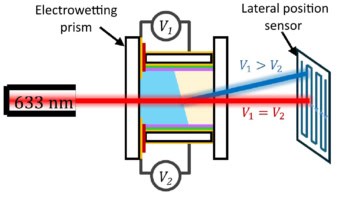
This map visualizes the connections between the users of Facebook – and its other social media platforms such as Instagram, WhatsApp and Messenger – as presented by Katherine Schmidtke in her plenary presentation at SPIE’s Photonics West. Schmidtke, who is responsible for optical technology strategy at Facebook, was making the point that rising usage across the globe, and in particular the trend towards sharing pictures and videos, is setting new challenges for the optoelectronic systems that power these social networks.
Although user-generated content is driving the growth, Schmidtke says that the overall demand for data processing is increasing even more as companies like Facebook build redundancy and resilience into their networks to safeguard their users’ information. As a result, Facebook has been building its own data centres since 2010, and now has dozens of sites in different parts of the world.
According to Schmidtke, the twin challenges for these data centres is to increase the bandwidth while minimizing the power usage. “Our data centres are designed to be as power efficient as possible,” she said. “The power footprint of each data centre is no more than 30 MW.”
And the big limiting factor lies in the optics. Separate pluggable modules are currently connected to the end of each optical fibre to convert photons into electrons, and Facebook has recently developed and deployed 100 Gb/s optical transceivers throughout its data centres. However, says Schmidtke, this approach cannot be scaled much further – not least because each data centre needs tens of thousands of transceivers, all of which must be connected by hand. Also problematic is that the current roadmap for higher bandwidth optical connectors suggests that they will consume far too much power to be a viable option. “The optics is currently a generation behind the electronics,” commented Schmidtke.
The only solution, she says, is to evolve the optical interconnect. “We need to integrate the optics with the switch electronics,” she said. “We can reduce the power by 20% by eliminating the internal IO functions, while co-packaging also improves reliability and enables more scalable manufacturing.”
Schmidtke also pointed out that the quantity of photonic integrated circuits that would be needed for data centre applications requires more scalable manufacturing techniques, similar to those already established for electronics. While CMOS processes are now largely automated and dominated by wafer-level processing, the manufacture of optical devices still requires significant manual intervention for post-production and packaging. The demand for photonic chips has not yet justified the huge investment needed for greater automation, but Schmidtke is now confident that “we now have the volume to move to CMOS-style manufacture for photonic integrated circuits”.


